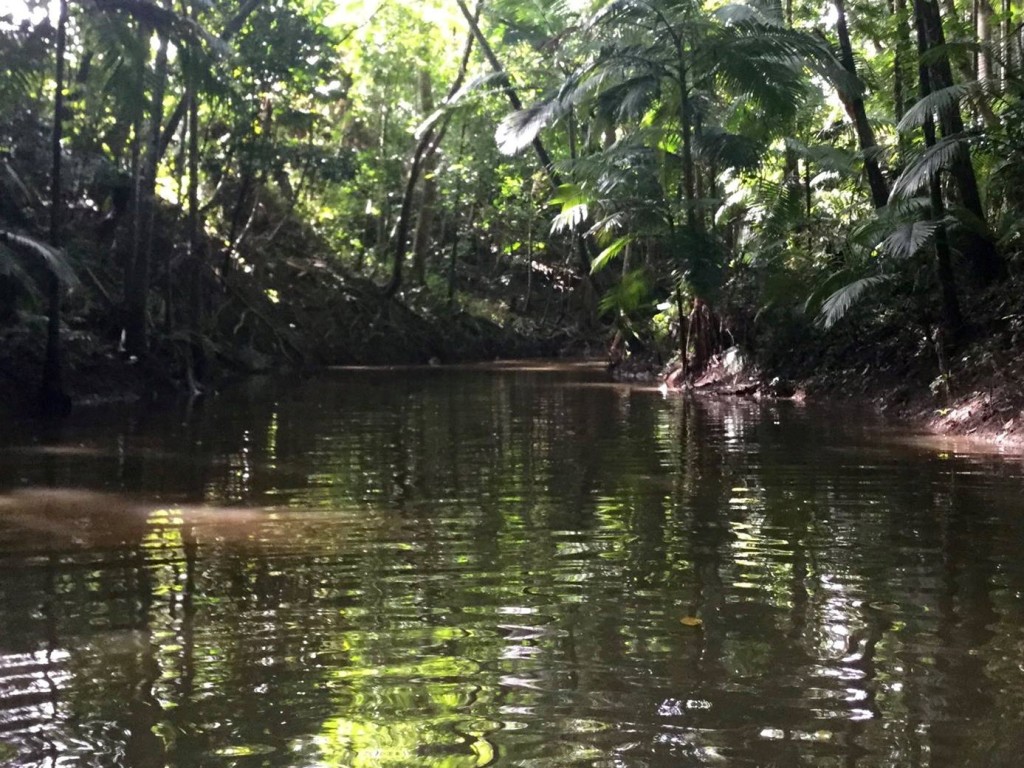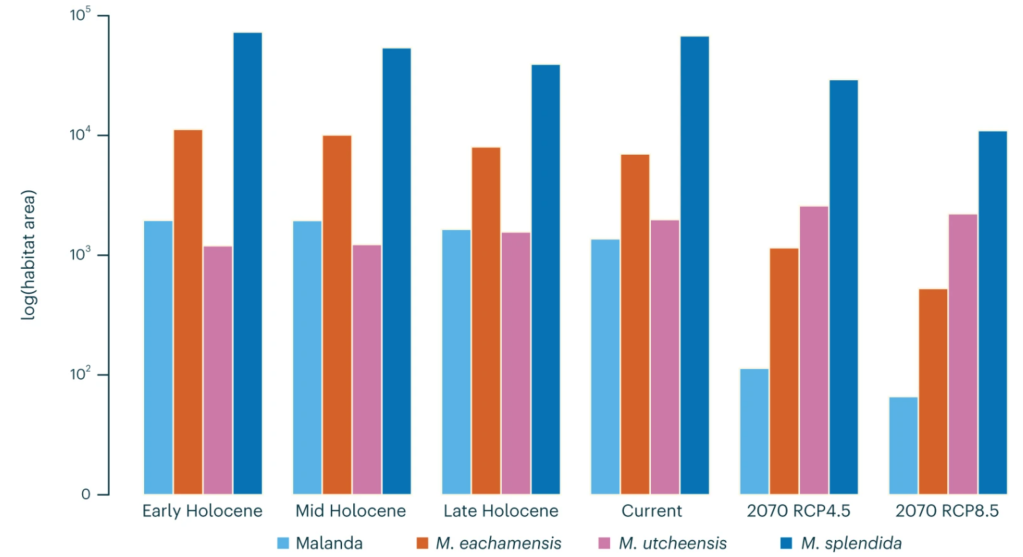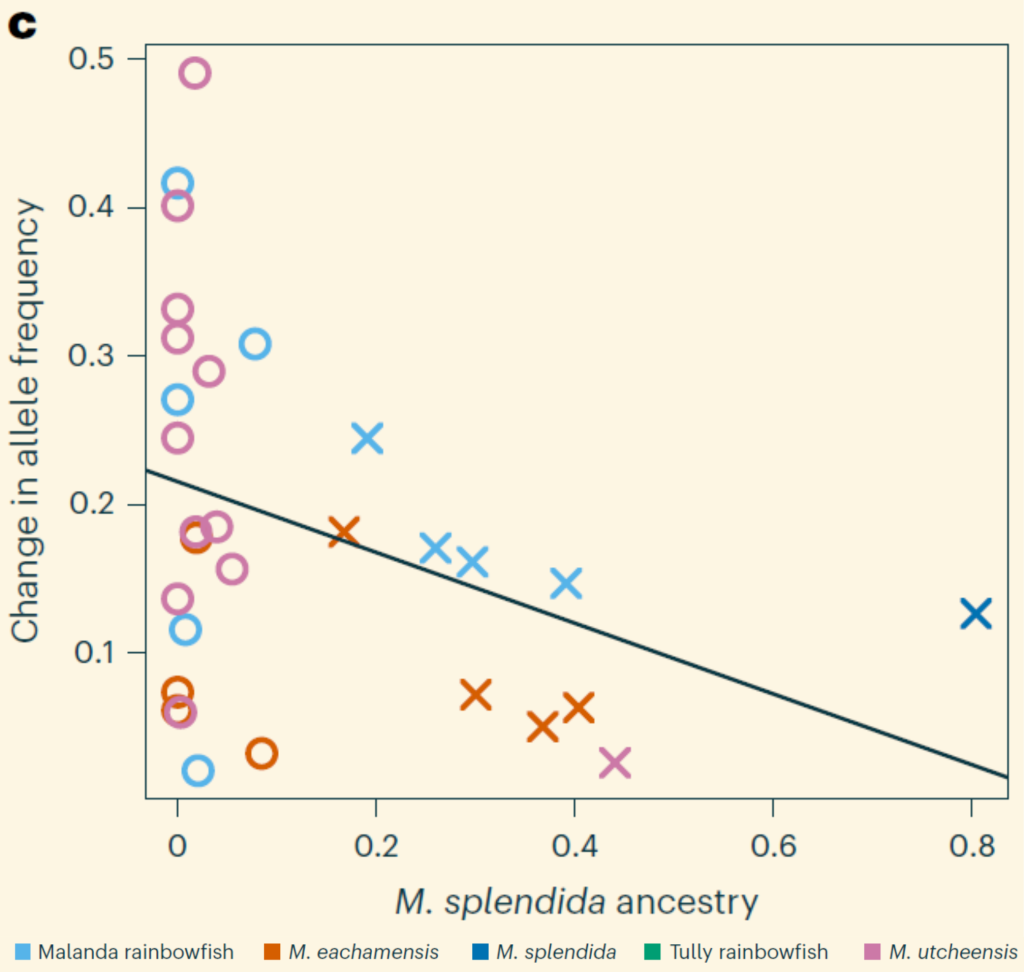Adapting to a changing world
The global climate is changing at an unprecedented rate, approaching conditions last seen globally over 3 million years ago. Impacted by the compounding effects of climate change, habitat modification, invasive species and direct exploitation (e.g., fishing and hunting), species across the globe are threatened with extinction. Key to the effective management of global biodiversity is the understanding of how species may (or may not) rise to the challenge of climate change: can species adapt? Which species will adapt? How will they adapt? The answers to these questions are elusive and complicated.
How can species adapt to climate change?
Species (and their comprising populations) may adapt to environmental change in several ways. For those with the capacity and means to move may shift their distribution to more favourable areas as conditions change, altering their migratory pathways and habitat. The feasibility of range shifts as an adaptive strategy are limited by the dispersal capacity of the given organism and available habitat. Alternatively, particularly flexible species may be able to tolerate and persist under a variety of environmental conditions through what is known as phenotypic plasticity. However, there are drawbacks (and limitations) to such approaches and many species may soon be pushed too far out of their adaptive niche to adjust. That leaves one other option: genetic-based adaptation.
It has been well established that much of adaptation with a genetic basis is promoted by standing genetic variation – that is, the existence of ample genetic diversity within a population before the environment changes. This genetic variation is the product of a range of evolutionary and demographic processes: (e.g.,) population size, connectivity and ecological traits all influence the amount and type of diversity maintained within populations. But one potentially under-appreciated source of genetic diversity is hybridisation – the mixing of two genetically distinct ‘populations’ (often separate species). As you can imagine, hybridisation can provide a significant boost in genetic diversity, including introducing adaptive variation into new species. Understanding its potential to promote adaptation to climate change requires a study system with not only a need for adaptation but a history of interspecific hybridisation.
Swimming rainbows
That’s where the Australian rainbowfishes come in. Within the genus Melanotaenia, this colourful collection of freshwater fishes is found across Australia and New Guinea and comprise 86 recognised species. Coveted for their beautiful patterning, they’re popular within the aquarium trade as well. Some species are wide-ranging, covering a large distribution – like the tropical rainbowfish Melanotaenia splendida – whereas others like the Lake Eacham rainbowfish Melanotaenia eachamensis are more restricted, and are referred to as ‘narrow endemic rainbowfishes’ (‘NERs’ for short). In recent years, however, climate change has pushed the more widely distributed M. splendida up into the habitat of upland NERs, driving species overlap and hybridisation. While this raises concerns for the preservation of these rare NERs, it might also provide the opportunity for the introduction of adaptive variation into these restricted species. Understanding whether this hybridisation promotes resilience to climate change is a key component of their conservation.

This is where the recently published work in Nature Climate Change by my former colleagues at the Molecular Ecology Lab at Flinders University comes in. With field work in the beautiful tropics that would be the envy of many a biologist (including myself), the team collected genetic samples from five species – the widely distributed M. splendida and four different NERs – all across the Australian Wet Tropics to better understand the scale and outcome of hybridisation. Using a genomic (ddRAD) sequencing approach, the team generated a dataset of 13,734 SNPs to determine genetic diversity, identify adaptive loci, assess the extent of hybridisation and evaluate how these factors together influence vulnerability to climate change in NERs.

A hybrid story
Hybridisation between M. splendida and three of the four NERs was extensive, occurring across multiple populations (particularly those in lowland regions, where the shifting M. splendida distribution is encroaching on their range) and likely has been occurring over several generations. These hybrid populations had higher genetic diversity than their “pure” counterparts.
To better understand how each of these species would be impacted by climate change, the authors also explored predicted changes in their distributions in the future. Combining GPS coordinates and current climatic data, they estimated the current distribution of these species as the basis for historical (up to ~10 thousand years ago) and future (for 2070, under two different climate change projections). They demonstrated that for all of these species, their distributions hadn’t changed much in the past but would likely contract strongly in the future – for example, the Malanda rainbowfish (one of the NERs) is predicted to lose up to 95% of its range by 2070. M. splendida was not predicted to lose as much of its distribution but will still likely suffer under climate change.

But the main goal of the work was to assess adaptive variation and genomic vulnerability: they used a genotype-environment association approach to identify 211 SNPs associated with adaptation to climate. Of these, many candidate loci were found within those introgressed regions in hybrids, demonstrating a significant translation of adaptive variation into NERs via hybridisation. To quantify this effect, they expanded on these candidate adaptive loci to calculate genomic vulnerability – a score of the amount of genetic change in these loci required to keep up with predicted climate change. Comparing hybrid and non-hybrid populations, they found that hybridisation significantly reduces the genomic vulnerability of NERs – without hybridisation, these pure NERs are missing ~10 – 30% of the SNPs linked to climate adaptation. Together, these results tell a simple but compelling story: natural hybridisation between species can improve their ability to adapt to climate change and may in fact be a necessary component for the ongoing survival of narrow endemics.

Conservation or preservation?
Within conservation management, hybridisation is seen as a complex and challenging aspect to manage. Mixing genetically divergent lineages carries some risk: if the two species are not genetically compatible, their resultant hybrid offspring may have maladaptive traits and lose fitness, driving further population declines (‘outbreeding depression’). At the same time, concerns around the potential erasure of unique species – intimately tied to a perception of species “purity” – also impacts conservation management. As a result, legislation rarely adequately considers interspecific hybrids as a valid conservation unit for protection. However, as demonstrated in rainbowfishes, hybridisation (especially natural) could be a critical evolutionary process to facilitate adaptation to ongoing climate change – without it, there may be nothing to conserve. Similarly, deliberate genetic mixing (genetic rescue) is growing as a conservation tool and has the potential to address a range of genetic-based threats to populations of conservation concern. As evolutionary knowledge, species threats and the climate all change, our conservation strategies must similarly adapt – and hybridisation may be an underappreciated solution.

One thought on “Mixing fishes and climate change – adaptation by hybridisation”